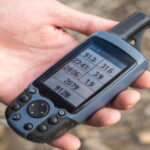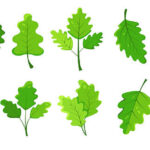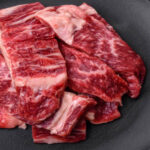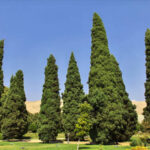In the first hundred words, let us answer the question that draws most readers here: What is a kukri khukuri? The kukri, also spelled khukuri, is a traditional curved knife from Nepal, instantly recognizable for its inward-bending blade. It is both a tool and a weapon, carried by farmers in the hills of Nepal, revered in rituals, and wielded in historic battles by the legendary Gurkha soldiers. Its significance stretches far beyond its cutting edge—it is a cultural emblem, a survival instrument, and a piece of living history. To understand the kukri is to glimpse the spirit of Nepal itself.
The Origins of the Kukri Khukuri
The kukri is believed to date back over a thousand years, with roots stretching into early South Asian civilizations. Some scholars suggest its lineage can be traced to blades carried by the Mallas of Nepal in the medieval period, while others argue it evolved from ancient farming sickles adapted for survival and warfare.
The word “kukri” or “khukuri” itself comes from the Sanskrit word krodhi, meaning “sharp.” Early versions were crude but practical, forged by local smiths for both agricultural and martial purposes. Over centuries, the blade became refined, gaining the iconic forward-curving profile that concentrates force at the point of impact.
Anatomy of a Kukri
A kukri is not simply a knife. Each curve, bevel, and notch carries symbolic and practical significance.
Key Features:
- Blade: Typically 10–15 inches, curved inward for balance and impact.
- Cho or Notch: A small cut near the base, believed to serve multiple roles—preventing blood from running onto the handle, symbolizing Shiva’s trident, and helping sharpeners identify the blade’s center.
- Spine: Thick and heavy near the hilt, tapering toward the tip.
- Handle: Made from horn, wood, or brass, shaped to fit securely in hand.
- Sheath: Traditionally leather-wrapped wood, often containing two small utility knives—karda (small knife) and chakmak (sharpener/striker).
This combination makes the kukri as effective in chopping wood as it is in self-defense.
Kukri in Everyday Life
For rural Nepali families, the kukri remains a household essential. Farmers use it to clear brush, cut fodder for animals, prepare food, and carve wood. Hunters rely on it for skinning and butchering. Even today, in many hill villages, one rarely finds a household without at least one kukri hanging near the hearth.
“Every man in the hills carried his kukri,” wrote a British officer in the early 20th century, “as naturally as he carried his dignity.”
Its presence in rituals is equally important. During Dashain, Nepal’s biggest festival, families perform goat sacrifices with a kukri, honoring the goddess Durga. In weddings, gifting a kukri symbolizes strength and protection.
Kukri and the Gurkha
The world came to know the kukri through the Gurkhas, Nepalese soldiers who entered British service in the early 1800s. The Anglo-Nepalese War (1814–1816) first revealed the ferocity of Gurkha fighters, whose curved blades made deep impressions on their opponents.
British officers often remarked that Gurkhas would never unsheathe the kukri without drawing blood, a belief both myth and tradition. While not strictly true in practice, it reflected the aura of fear and respect surrounding the blade.
During both World Wars, Gurkhas carried kukris into battle. They used them not just as weapons but as all-purpose field tools. Stories of kukri charges—where soldiers, out of ammunition, drew their curved knives and advanced fearlessly—became legendary.
As Sir Francis Tuker, a British general, once observed:
“The kukri is not just a weapon. It is the very spirit of the Gurkha himself, curved and unyielding.”
Symbolism and Cultural Identity
The kukri is more than steel and wood. It symbolizes Nepal’s rugged resilience. For Gurkhas abroad, it is a reminder of home and heritage. For Nepali households, it is a talisman of safety, fertility, and continuity.
The blade often carries engravings—sun, moon, deities—representing blessings for its bearer. Some kukris are ceremonial, elaborately decorated with silver or ivory, given as diplomatic gifts or presented to soldiers at honors ceremonies.
One retired Gurkha captain once said:
“When I hand my kukri to my son, I am not giving him a knife. I am giving him our story.”
Types of Kukri
Over centuries, various forms of the kukri have evolved. Each reflects a purpose, region, or ritual.
Table of Common Kukri Types
| Type | Description | Use |
|---|---|---|
| Sirupate | Slim, leaf-shaped blade | Everyday work, light combat |
| Bhojpure | Broad, heavy blade from Bhojpur | Farming, rituals |
| Panawala | With riveted handle | Heavy-duty cutting |
| Chainpure | Slim, elegant design from Chainpur | Utility and decorative |
| Angkhola | Fuller groove for balance | Combat, precision |
| Ceremonial Kukri | Ornate, engraved | Festivals, rituals, gifts |
The Craft of Forging
Kukris are traditionally forged by kamis, members of Nepal’s blacksmith caste. The process remains remarkably unchanged:
- Selecting Steel: Often recycled truck springs or railway steel.
- Heating and Hammering: Shaping the curved blade over charcoal fires.
- Quenching: Dipping the blade in oil or water for hardness.
- Polishing and Sharpening: Bringing out the edge and finish.
- Handle Fitting: Horn, wood, or brass shaped to fit snugly.
The skill lies not just in the forging but in achieving balance. A well-made kukri feels alive in the hand—its weight forward, yet not cumbersome.
Kukri in Modern Times
Today, the kukri straddles worlds. In Nepal, it continues as a household necessity. Abroad, it has found audiences among collectors, outdoor enthusiasts, and military historians.
Kukris are sold as souvenirs to trekkers, though quality varies widely. Authentic handmade kukris from skilled artisans remain sought after. Modern Gurkha regiments still issue kukris to soldiers, maintaining the link between past and present.
Global survivalists praise its versatility—it chops wood like a hatchet, slices like a knife, and withstands rugged use.
Quotes on the Kukri
- “To hold a kukri is to hold a piece of Nepal in your hand.” – Nepali craftsman, Kathmandu
- “No tool, no weapon, no symbol—just the kukri, which is all three at once.” – Anthropologist’s field notes
- “The kukri cuts wood, meat, and myth with the same curved edge.” – Modern historian
Kukri in Popular Imagination
From British colonial memoirs to modern documentaries, the kukri has captured imaginations. It features in martial arts demonstrations, survival shows, and military museums worldwide. The weapon-tool duality fascinates both scholars and adventurers.
Even Hollywood has occasionally borrowed the kukri’s silhouette, though often exaggerating its lethality. The reality is subtler: a tool of necessity that became a blade of legend.
Maintaining a Kukri
Proper care extends a kukri’s life:
- Keep blade lightly oiled to prevent rust.
- Sharpen with traditional chakmak or modern stones.
- Store in dry conditions to preserve handle and sheath.
- Avoid using ceremonial kukris for heavy work.
Collectors often display them mounted, while in Nepal, they remain stored near hearths, ready for daily use.
Kukri as Heritage
The kukri is Nepal’s unofficial national weapon, but more accurately, it is a vessel of continuity. In urban Kathmandu, young people may not carry one daily, yet they still recognize it as a family heirloom. Internationally, the kukri has become shorthand for Gurkha valor, appearing on regimental insignia and memorials.
Looking Ahead
The kukri khukuri continues to evolve. Artisans experiment with modern alloys, ergonomic grips, and hybrid designs for outdoor markets. Yet its soul remains unchanged. It is still curved, still heavy at the front, still unmistakably Nepali.
In a world of mass-produced blades, the kukri’s hand-forged individuality is its strength. Each blade carries not just the edge of steel but the edge of memory, story, and identity.
FAQs About Kukri Khukuri
Q1: Is a kukri a sword or a knife?
A kukri is a knife, though larger than most. Its size and weight allow it to function like a small machete, but it is not classified as a sword.
Q2: Why is the blade curved?
The inward curve focuses the force of a swing at the blade’s tip, making it powerful for chopping and cutting with minimal effort.
Q3: Do Gurkha soldiers still use kukris?
Yes. Gurkhas are still issued kukris as part of their kit. While modern firearms dominate combat, the kukri remains a symbolic and practical sidearm.
Q4: What is the difference between kukri and khukuri?
Both words describe the same blade. “Kukri” is the Anglicized spelling, while “khukuri” is closer to the Nepali pronunciation.
Q5: Can a kukri be used for cooking?
Yes. In rural Nepal, it is often used to chop meat, vegetables, and firewood alike, proving its multipurpose nature.
Final Reflection
The kukri khukuri is not merely a blade—it is a living link between past and present, myth and utility, Nepal and the wider world. Its curve embodies resilience, adaptation, and artistry. To study it is to understand not just a weapon but a people and their enduring traditions.
And in every swing of the kukri, whether felling wood or defending honor, the story of Nepal continues to be written.










